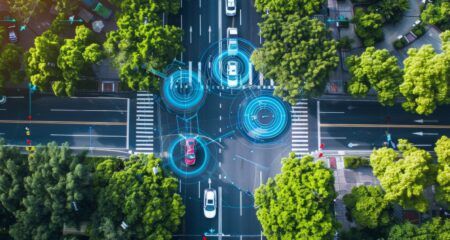Siemens Intelligent Traffic Systems is providing an in-kind investment of its connected vehicle (CV) hardware and software technologies to Columbus, Ohio, the recent winner of the US Department of Transportation’s (USDOT) Smart City Challenge.
Siemens’ CV technology investment, valued at US$385,000, aims to support the expansion of ‘Smart Columbus’, an initiative to implement technologies that help residents move more easily and access opportunity. The advanced hardware and software will act as the foundation for the city’s future CV efforts, enabling vehicles to communicate with traffic infrastructure (V2I) and, as a result, improve driver and pedestrian safety, reduce congestion, and lower emissions. Columbus won the USDOT’s US$40m Smart City Challenge in June last year, after competing against 77 cities nationwide to implement a holistic vision for how technology can help all residents to move more easily and to access opportunity. The city was also awarded a US$10m grant from the Paul G Allen Family Foundation to reduce greenhouse gas emissions through the de-carbonization of the electric supply and transportation sectors.
The Siemens intelligent software and hardware package for Columbus includes CV-ready traffic control software (SEPAC) that provides operators with detailed traffic signal phase timing, roadside units that allow traffic intersections to communicate with vehicles, and roadside unit management software that gives operators real-time visibility into traffic flow and CV operations. The company will also provide the city with training and support. The CV systems that will be supplied to the city are able to communicate between vehicles and infrastructure and give drivers suggestions in real time, such as speed recommendations, curve speed warnings, or prioritization of specific vehicle fleets, including transit and emergency services. The USDOT estimates that CVs can potentially avoid or mitigate 80% of unimpaired crashes, so as part of its Smart Columbus initiative, the city will determine the most effective use cases and locations to implement the new technology.
“Columbus isn’t just envisioning a city where their infrastructure is smarter, they’re making it happen. With this connected vehicle technology, infrastructure like intersections and streetlights will have the ability to ‘communicate’ with vehicles, buses, or even pedestrians to help drivers make decisions that can reduce congestion and increase safety,” said Marcus Welz, CEO of Siemens ITS North America. “We’re proud to be partnering with a city truly leading the way in putting technology to work for their residents, and we’re excited to continue our work with them to make these systems a reality.”




